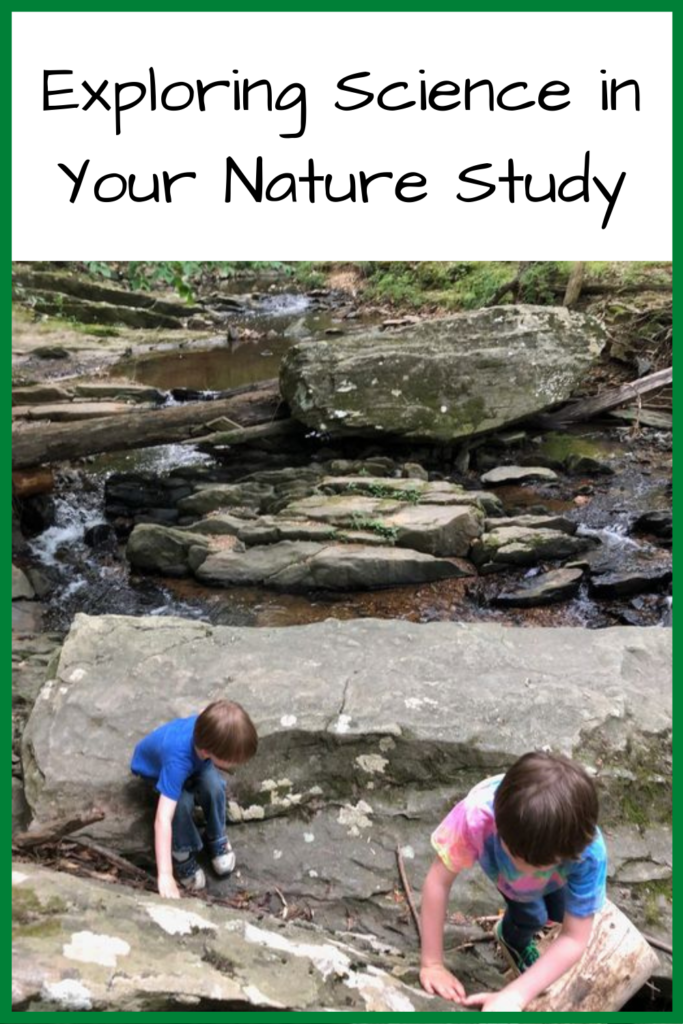
“Do you have any recommendations on how to make being in nature more sciency?” a friend texted me.
I paused, because my first thought was “Uh, not a formal curriculum or anything.” But then I realized that learning so often has nothing to do with a curriculum. In fact, we do informal learning all the time in our family, from observing how plants grow in the garden to reading a map on a hike. Similarly, when I was an outdoor educator, we had a structure to our lessons but much of the learning was unplanned.
Whether you’re a long-term homeschooler or looking to complement virtual learning with outdoors time, every family can benefit from these ways to learn in nature:
Focus more on skills than facts
The outdoors provides loads of opportunities for kids to learn how to think like scientists, particularly those who work in the field. As someone who has done a bit of field research, I can confidently say that the top two skills needed are observation and patience. For my field biology class, I spent hours sitting still and counting seagulls for a project. A friend of mine who was a plant biologist said she spent years for her PhD counting plants in little tiny square feet sections of land. Even beyond research, animals simply won’t reveal themselves to you if you are loud and unpredictable. Similarly, plants in a garden grow in their own time, no matter how much faster you want them to grow. Being able to wait and watch will lead to more learning than you’ll ever expect. No matter how many facts you learn, being able to see it in action is a much more powerful experience.
Learn to identify plants and animals (as well as the signs they leave behind)
My field biology teacher said that learning something’s name is key to being able to appreciate it. While no one expects kids to learn the scientific names of animals or plants, it’s helpful to identify them by their English names so you can look up facts about them later. There are a lot of identification apps these days, but sometimes a good, old-fashioned field guide actually works the best. My older son saw a small lizard on a hike the other day and was able to describe it so well that we were able to look it up in my book of reptiles and amphibians, leaning that it was a juvenile five-lined skink. Unfortunately, you don’t always see the animals themselves. But sometimes you do see what they leave behind. Learning how to identify tracks and scat (animal poop) is fun and makes you feel like you have a secret skill. If you search “nature bingo,” there are loads of examples of templates to use for that type of game.
Take notes
Observation in the moment is great, but being able to see patterns and changes over time and through seasons is even more illuminating. Getting a nature journal for your kids to write or draw their observations can lead to them coming to their own conclusions. You can even come up with some hypotheses and test them over time!
Use questions to help kids learn to research
You don’t have to have all of the answers. I have a masters in environmental science and still have to say, “I don’t know – we should look that up!” on a regular basis. Instead, look up the answers to questions (or write down the questions to look up later) with your kids. It’s a great opportunity to talk about how to conduct research, evaluate what websites are reliable, and figure out the information together.
Read complementary books and magazines
There are so many great books relating to nature. In the picture book realm, Who Pooped in the Park?, Up in the Garden Down in the Dirt, and Morning Sunshine! are all adorable and informative. The Ranger Rick magazines put out by the National Wildlife Foundation are full of information about animals and natural systems.
Connect nature to all types of subjects
Nature study can go way beyond just science. Of course, nature scenes play a huge role in art, from Monet’s water gardens to Ansel Adams’ photographs. Kids can make their own art based on what they see or even use natural materials, like leaves and sticks. Discussing the history of the conservation movement can lead to all kinds of thoughtful, in-depth conversations about who has the right to own and use land (National Parks were built on land seized from Native Americans) and how laws are made.
Let your kids lead
This is probably the most important one. Learning – especially when it’s focused on skills more than facts- is the most effective when it’s led by the student’s interests and needs. Finding ways to figure out what your kid is interested in and feeding that can lead to more learning than you’ll ever predict.
If you are looking for more formal curriculum-like materials and activities, the Free Forest School and Tinkergarten have some great items up for preschoolers. For older kids, searching for “Forest schooling” or “wild schooling” will bring up a huge number of ideas and activities. Also, it’s important to note that none of these approaches require “wilderness” to carry out. Learning from nature can be done in your backyard, a city park (even a pocket park), or even in some cases – like birdwatching – from your window.